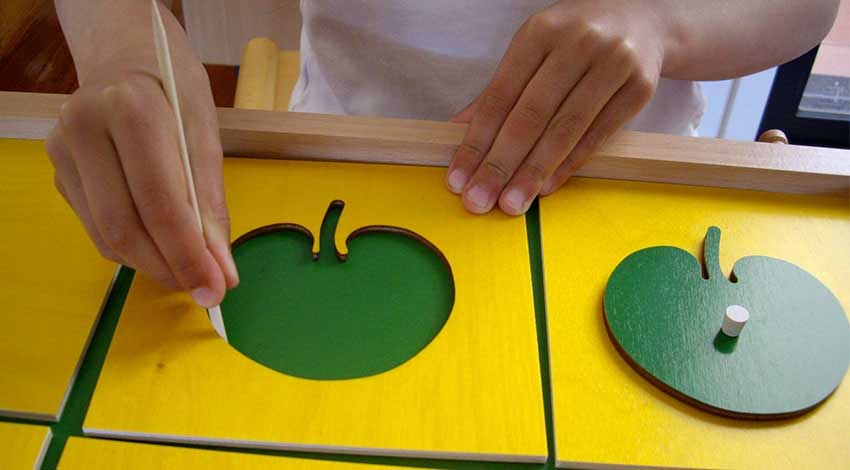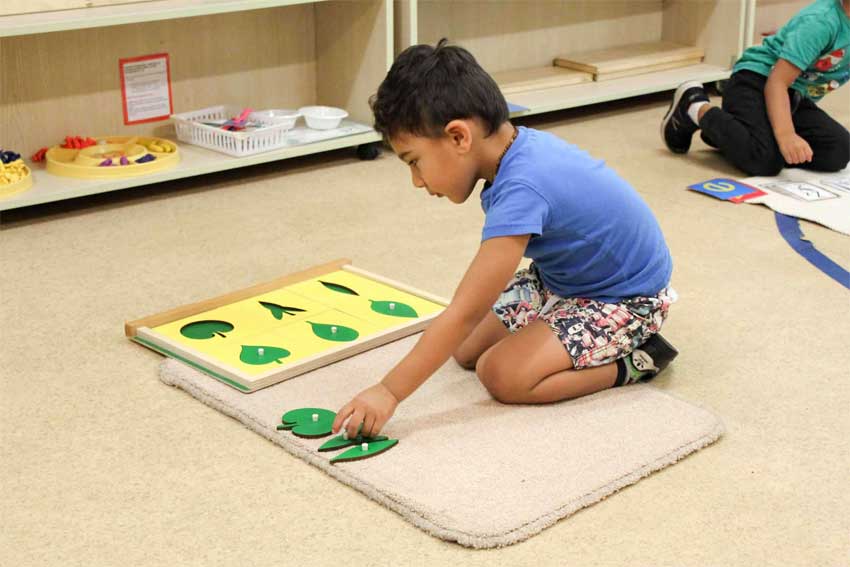In Montessori education, materials are thoughtfully designed to engage children in hands-on learning experiences that foster cognitive, sensory, and physical development. One such material, the Montessori Leaf Cabinet, plays a crucial role in helping young learners develop fine motor skills and hand-eye coordination. By engaging with the leaf cabinet, children interact with nature and work on essential physical skills that lay the foundation for later academic and practical tasks.
In this article, we’ll explore how the Montessori Leaf Cabinet contributes to the development of fine motor skills, coordination, and overall physical dexterity. We’ll also discuss how this material fits into the broader Montessori philosophy of encouraging independent learning through tactile, purposeful activities.
What is the Montessori Leaf Cabinet?
The Montessori Leaf Cabinet is a specialized educational tool that features a series of compartments or drawers, each containing various types of real leaves or leaf representations. The material is typically made of natural wood and is designed to help children classify, sort, and organize different leaves based on characteristics such as shape, size, texture, or type. The physical act of working with these leaves encourages tactile exploration and enhances sensory awareness while simultaneously developing fine motor control.
While the primary aim of the Montessori Leaf Cabinet is to teach children about plant life and classification, it also serves as an exceptional tool for supporting the development of fine motor skills and hand-eye coordination.

1. Grasping and Manipulating Small Objects
Fine motor skills are essential for performing everyday tasks, from tying shoes to holding a pencil. The Montessori Leaf Cabinet helps children strengthen these skills by providing opportunities to grasp and manipulate small objects—in this case, leaves. To place each leaf into the appropriate compartment or organize them according to specific characteristics, children must use their fingers and hands with precision.
The task of carefully picking up and handling leaves helps develop the pincer grasp, which is critical for holding small objects and performing more intricate tasks in later life. By refining this grip, children gain the dexterity required for activities such as writing, drawing, and cutting, which are crucial skills for school-aged children.
2. Sorting, Ordering, and Organizing
One of the fundamental learning objectives of the Montessori Leaf Cabinet is to teach children the concept of order. The material encourages children to sort leaves according to certain characteristics—such as size, shape, or type of plant. Sorting tasks require the use of the child’s hands and fingers to pick up and place objects into different categories. This helps children improve their hand-eye coordination and dexterity, which are critical for managing various tasks in daily life and in academic settings.
As children engage with the leaf cabinet, they are not only building their fine motor abilities but also learning about the concept of classification. The organization of leaves into categories improves their ability to visualize patterns and enhances their problem-solving skills. This process of sorting and classifying through tactile engagement also develops spatial awareness, helping children to learn how to manipulate objects in space.
3. Strengthening Hand-Eye Coordination
Hand-eye coordination is a vital skill that allows children to link their visual perception with physical actions. The Montessori Leaf Cabinet provides ample opportunities for children to develop this skill. As children interact with the leaves, they must align their hand movements with their visual perception of the materials.
For example, when placing a leaf into a specific drawer, the child must look at the drawer and then use their hands to manipulate the leaf into place. The more they engage with this type of task, the more proficient they become at aligning their actions with what they see, which is crucial for activities such as drawing, writing, or even daily tasks like buttoning clothes or using utensils.
4. Promoting Concentration and Focus
In the Montessori method, activities like those associated with the Leaf Cabinet promote deep concentration. Working with small objects such as leaves requires a level of focus that naturally enhances a child’s attention span. As children handle and organize the leaves, they learn how to concentrate on the task at hand and improve their fine motor control.
Concentrating on a small-scale task helps build muscle memory and improves the child’s ability to engage in complex, detail-oriented tasks. This extended focus on fine motor activities not only helps with physical dexterity but also encourages mental development. Over time, children develop the ability to maintain their focus for longer periods, which is beneficial for academic and personal growth.
5. Enhancing Bilateral Coordination
Bilateral coordination is the ability to use both sides of the body together in a coordinated way. Many tasks in the Montessori Leaf Cabinet, such as picking up and arranging leaves, involve both hands working together in a complementary fashion. This helps children develop the ability to use their dominant and non-dominant hands in tandem, enhancing overall motor coordination.
For example, a child may use one hand to hold the leaf while the other hand arranges it in the correct spot. This simple but effective action fosters coordination between both hands, which is essential for many activities that require the simultaneous use of both hands, such as drawing, cutting, or using tools.
6. Encouraging Independence and Self-Confidence
As children engage with the Montessori Leaf Cabinet, they develop a sense of independence and confidence in their ability to perform tasks on their own. This independence is not only beneficial for cognitive and social-emotional growth but also for physical development. Children begin to feel capable and proud of their ability to manipulate and organize materials with their hands, which further motivates them to refine their fine motor skills.
Additionally, the autonomy provided by the Montessori approach encourages self-regulation. Children learn to manage their actions in a focused, purposeful way, which contributes to both their physical and emotional growth.
Conclusion: A Tool for Growth
The Montessori Leaf Cabinet is more than just a tool for teaching children about the natural world—it’s an effective way to nurture fine motor skills, hand-eye coordination, and concentration in young learners. Through tasks like sorting, organizing, and classifying, children engage in purposeful, hands-on learning that builds dexterity and precision, while also fostering a love of nature and an understanding of order.
By working with the Leaf Cabinet, children refine their motor skills and develop the physical capabilities that will serve them throughout their lives. Whether it’s learning how to tie shoes, write, or engage in complex tasks, the fine motor skills developed through Montessori materials like the Leaf Cabinet provide a strong foundation for future success in both school and everyday life.
Content Prepared by: Pratheek
Contact no: +91 9846808283




